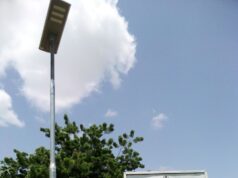OCTOBER 3, 2018 – Oil prices steadied near their highest since November 2014 on Tuesday as markets braced for tighter supply once U.S. sanctions against Iran kick in next month.
The international crude oil benchmark LCOc1 was flat at $84.98 per barrel by 1344 GMT after reaching a new four-year high of $85.45 in the previous session.
U.S. West Texas Intermediate (WTI) crude futures CLc1 were up 11 cents at $75.41 a barrel, having hit a four-year high of $75.91 earlier in the session.
Brent and WTI have roughly tripled compared with lows seen in January 2016, when the Organization of the Petroleum Exporting Countries (OPEC) and allies led by Russia started to curb oil supplies to rebalance an oversupplied market.
Sentiment was lifted by a last-gasp deal to salvage NAFTA as a trilateral pact between the United States, Mexico and Canada, rescuing a $1.2 trillion a year open-trade zone that had been about to collapse.
More fundamentally, oil markets have been pushed up by looming U.S. sanctions against Iran’s oil industry, which at its most recent peak this year supplied nearly 3 percent of the world’s almost 100 million barrels of daily consumption.
A Reuters survey of OPEC production found Iranian output in September fell by 100,000 barrels per day, while production from the group as a whole rose by 90,000 bpd compared with August.
“Oil prices continue to climb, supported by the nearing Iran embargo and related supply concerns,” said Norbert Ruecker, head of commodity research at Swiss bank Julius Baer.
HSBC said in its fourth-quarter Global Economics outlook that “our oil analysts believe there is now a growing risk it (crude) could touch $100 per barrel”.
Washington’s sanctions start on Nov. 4. Many analysts say OPEC will struggle to cover a decline in exports from Iran.
“The general impression out there currently seems to be that there is either an outright inability or at least a certain unwillingness … to compensate for the expected continuation of declining Iranian export flows,” Vienna-based consultancy JBC Energy said.
Britain’s Barclays bank, however, said “OPEC has ample spare capacity”.
For now, soaring crude prices and weak emerging market currencies, including India’s rupee and Indonesia’s rupiah, may erode economic growth.
“Softening demand growth and new supply should cool the bullish sentiment and push prices lower by the end of the year,” Barclays said.









